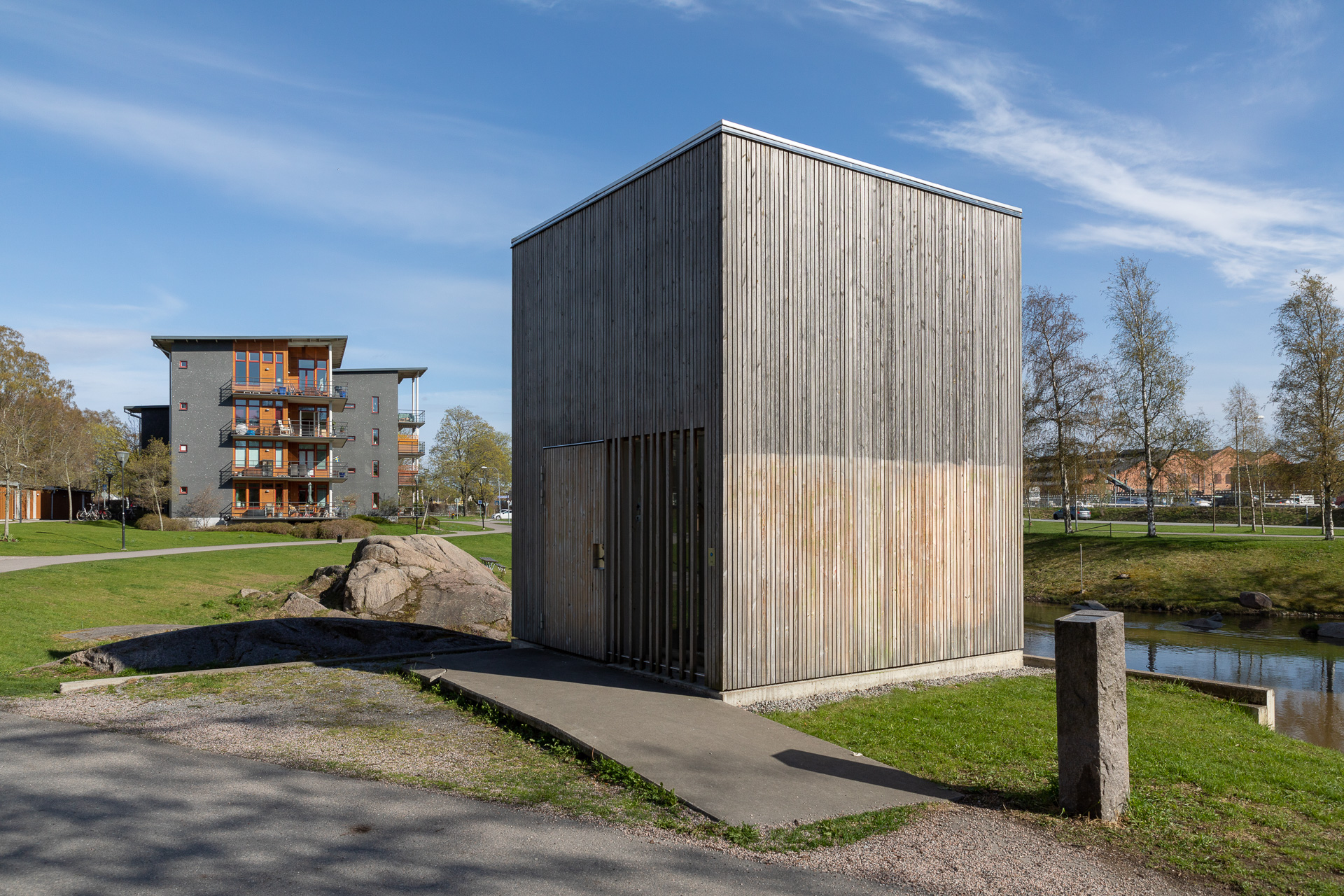Lux
A tall, cube-shaped building of narrow, light gray wood panels and details of concrete and steel stands along Lilla Å. A shiny steel edge runs around the edges of the flat roof. The door and the large window next to it reach almost half of the building. The door is well integrated with the facade. The window starts at the bottom of the floor and ends at the level of the top of the door. Some of the facade's panels continue down in front of the window like a lattice. The grille is sparse enough to be visible, but tight enough for a person not to be able to walk in between. A blue light button is on the wall next to the window.


Lux means light in Latin and is also the name of a unit for measuring light intensity. The Lux pavilion is an exhibition space that can be closed and open at the same time. The door to the pavilion is usually locked, but the exhibition space is built to be viewed from the outside. The lighting can also be turned on via a blue button on the outside of the building, so that you can look at the art inside at any time of the day or night. Have you tried switching on the light when it’s dark outside?
Lux came about as part of the Lilla Å sculpture riverwalk project, and the artist leading the project, Stefan Rydéen, was the one who came up with the idea of constructing a small art pavilion adjacent to the riverwalk. Architecture students from an international graduating class at the Chalmers School of Architecture in Gothenburg were asked to interpret his idea in design proposals. The winning proposal was drawn by Karin Kjellson and construction was carried out with the help of students in the construction and contracting programmes at Tullängsskolan, along with some twenty-odd local companies.
The design is simple and reserved. The building itself should not steal attention from the exhibits inside. The façade is painted with pine tar vitriol, which gives the wood its grey colour. The space inside measures four cubic metres.
In the pavilion, you can see exhibitions by active artists. The exhibition space is run by the Bunkern art association on behalf of Örebro Art Gallery. If you’d like to exhibit here, contact the association with your exhibition proposal and CV!
Konstverk: Lux
Konstnär: Karin Kjellson
År: 2004
Material: Façade in larch wood, painted with pine tar vitriol. Glass, concrete, steel.
Placering: Between Ulla Billquists park and Lillån
Ägare: Örebro Municipality
Konstverkets position på karta
Publicerad:
Tack för ditt svar!
Berätta gärna vad vi kan göra bättre på den här sidan för att förbättra webbplatsen! Vi har ingen möjlighet att svara, men dina synpunkter är värdefulla för oss. Tänk på att inte skicka in personuppgifter. Om du vill ha svar på en fråga kan du istället använda formuläret ”Lämna en synpunkt”.
Om du ändå skickar in personuppgifter via detta formulär hanteras uppgifterna av Kommunstyrelsen och kan eventuellt lämnas vidare till annan verksamhet inom Örebro kommun i syfte att förbättra vår service.
Här hittar du mer information om hur vi hanterar personuppgifter.
Tack för ditt svar!
Du har nu hjälpt oss att förbättra orebro.se
